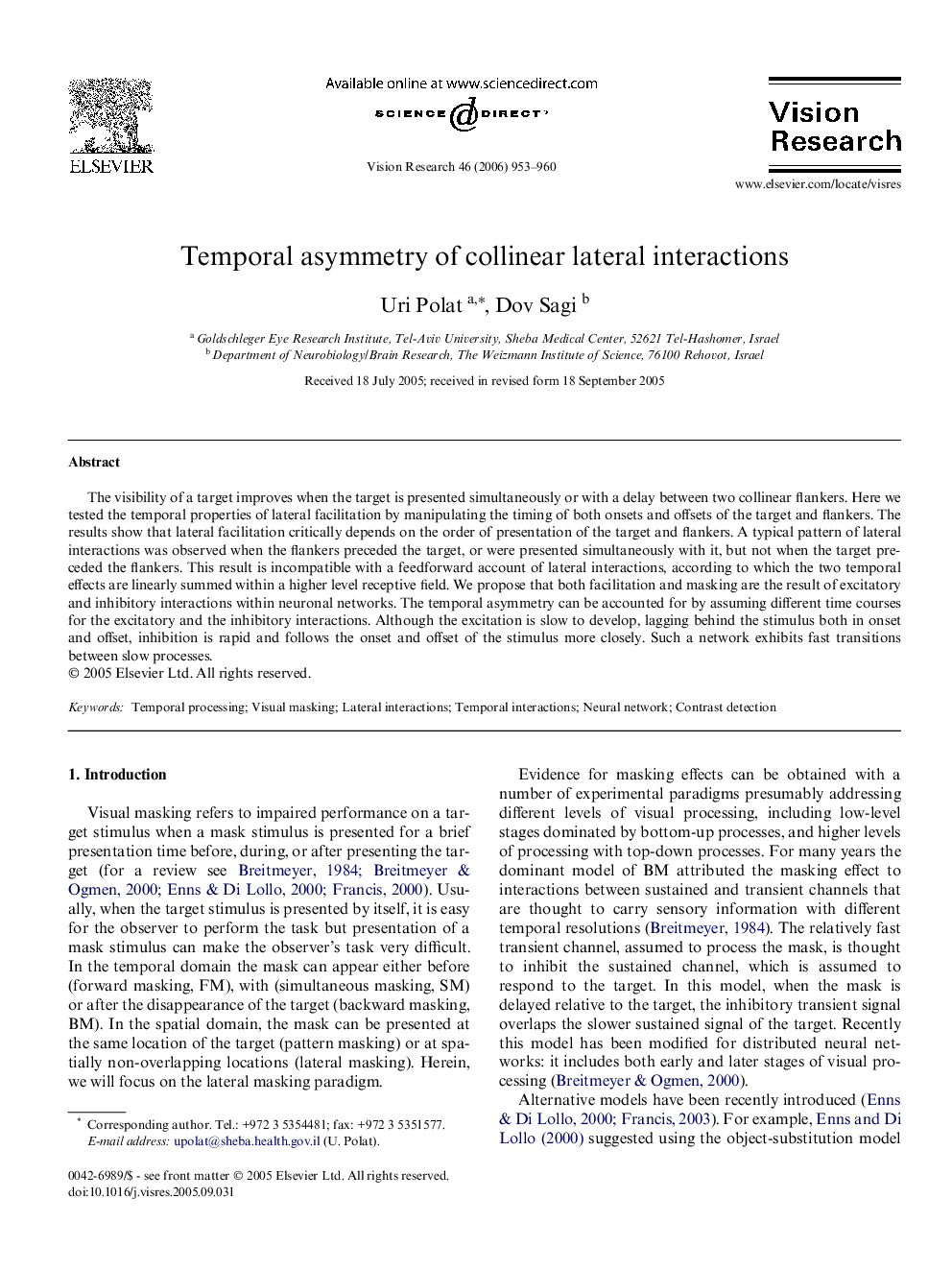| Article ID | Journal | Published Year | Pages | File Type |
|---|---|---|---|---|
| 4036353 | Vision Research | 2006 | 8 Pages |
The visibility of a target improves when the target is presented simultaneously or with a delay between two collinear flankers. Here we tested the temporal properties of lateral facilitation by manipulating the timing of both onsets and offsets of the target and flankers. The results show that lateral facilitation critically depends on the order of presentation of the target and flankers. A typical pattern of lateral interactions was observed when the flankers preceded the target, or were presented simultaneously with it, but not when the target preceded the flankers. This result is incompatible with a feedforward account of lateral interactions, according to which the two temporal effects are linearly summed within a higher level receptive field. We propose that both facilitation and masking are the result of excitatory and inhibitory interactions within neuronal networks. The temporal asymmetry can be accounted for by assuming different time courses for the excitatory and the inhibitory interactions. Although the excitation is slow to develop, lagging behind the stimulus both in onset and offset, inhibition is rapid and follows the onset and offset of the stimulus more closely. Such a network exhibits fast transitions between slow processes.
